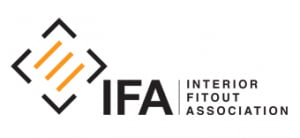Growing concern over the rise in reported respirable crystalline silica (RCS) related cases, is putting pressure on the construction industry to crack down on health and safety practices.
While governments are targeting the stonemasonry industry, and specifically banning dry cutting techniques, the wording used in new legislation from the Victorian and Queensland governments implicates all processes and products which can generate RCS. This includes plasterboard and plaster-based products.
USG Boral is committed to helping create healthier work environments. As a manufacturer of plasterboards and jointing compounds, USG Boral has a responsibility to support employee and contractor health and safety and reviews the products and services it provides to ensure they contribute to a safer work place. This includes improvements in the development of water-resistant plasterboard and new jointing compounds.
The crystalline silica content of raw materials can vary considerably across industries. Exposure in the plasterboard industry comes from the use of gypsum and limestone. However, local sources of both are very pure, with low levels of crystalline silica content. According to Tim Harrington, USG Boral category manager – compounds, “Plaster based products contain very small amounts of Quartz (crystalline silica) with finished plasterboard and plasterboard jointing compounds typically containing less than 0.1 per cent respirable crystalline silica.”
The Safe Work Australia Permissible Exposure Limit for RCS is 100ug/m3 over an eight-hour work day. An employee’s level of risk is a combination of the type of material being handled and the manner of the activity being undertaken. That is why high quartz content manufactured stone that is dry cut at high speed, producing respirable crystalline silica above the workplace exposure standard, is under the spotlight. “The onsite preparation and installation of plasterboard does not exceed the permissible workplace exposure standard,” offered Harrington.
In the last few years, the construction industry has adopted numerous safety practices to minimise exposure to airborne hazards, including vacuum assisted sanding tools and more effective dust masks with higher protection against airborne particulates.
Respirable dust is generated in work places when jointed plasterboard walls and ceilings are sanded using hand or mechanical sanders. SHEETROCK® Dust Control limits the pluming of sanded compound dust through air spaces. Technology contained in the product produces dust particles which fall directly to the wall or floor junction and react better to the vacuum of mechanical sanders. The result is far less airborne dust.
Tested to the USA’s National Institute of Occupational Health and Safety (NIOSH) Method 0600, SHEETROCK® Dust Control produces respirable airborne dust at levels lower than the USA’s current Occupational Safety and Health Administration (OHSA) Permissible Exposure Limits (PELs) that are lower than the current PELs set by Safe Work Australia.
Tim Harrington reinforced that USG Boral is committed to developing products that provide the industry with a safer working environment. “Not only do USG Boral’s wet area plasterboard and SHEETROCK® Dust Control provide unrivalled finishes, there are also real-world benefits. “The work place of old is no longer the norm. Working in a dusty air space, spending hours cleaning up, covered in dust is not something which has to go with the territory.”


